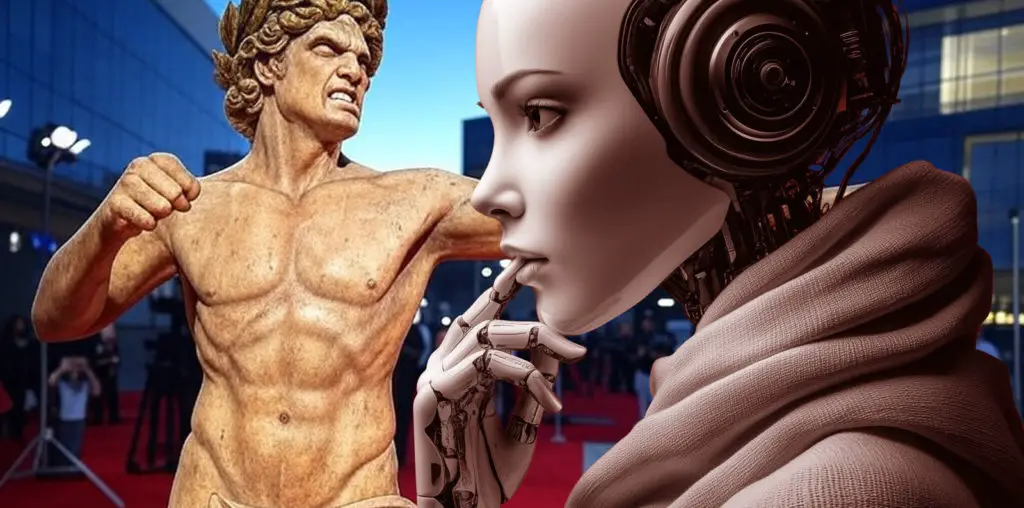
BOOTLEG FILES 323: “The Duke is Tops” (1938 musical starring 21-year-old Lena Horne in her film debut).
LAST SEEN: Available online at Archive.org.
AMERICAN HOME VIDEO: On cheap public domain video labels.
REASON FOR BOOTLEG STATUS: A lapsed copyright.
CHANCES OF SEEING A COMMERCIAL DVD RELEASE: As an orphan film, anyone can dupe it.
Lena Horne passed away earlier this week, and the news coverage of her death obviously put a great deal of attention on her groundbreaking yet controversial position within Metro-Goldwyn-Mayer’s roster of glamorous movie stars. However, the majority of the obituaries glossed over Horne’s first work in films: a no-budget, independently produced 1938 musical called “The Duke is Tops.”
“The Duke is Tops” was part of the long-defunct genre known as “race films” – productions with all-black casts that were exclusively distributed to segregated theaters during the Jim Crow era. While the film industry trade media acknowledged these productions existed, very few white moviegoers saw race films when they were in theatrical release. However, they served a function as the training ground for a number of prominent African American actors, including Paul Robeson and Canada Lee.
The majority of the race films were actually produced and directed by white filmmakers. But in the case of “The Duke is Tops,” the film was produced by a black consortium that included Ralph Cooper, a handsome singer/actor who was best known as the master of ceremonies at the fabled Amateur Night showcase in Harlem’s Apollo Theater. Hollywood of the late 1930s had no roles for Cooper, but he managed to find a niche as a leading man in the race films. Eager to expand his involvement in the genre, he became a partner in Million Dollar Productions and created a vehicle that would showcase his talents.
Cooper’s idea for “The Duke is Tops” involved a vivacious singer as the film’s leading lady. He initially wanted actress/singer Nina Mae McKinney for the role, but McKinney was not available. (A correction for the Horne obituaries: it was McKinney, not Horne, who was the first African American to snag a Hollywood studio contract – McKinney signed with MGM in 1929, but her Hollywood career was desultory and her achievement was forgotten.)
Horne came to Cooper based on the buzz from her singing gigs at New York’s Cotton Club. Cooper offered Horne $600 to star in his film. Even though she had no acting experience and had just given birth to her daughter, she accepted the part and flew from her home in Pittsburgh to Los Angeles – but this was during the early days of transcontinental travel and the trip took 48 uncomfortable hours to complete!
Upon arriving at the rundown studio where the film was being shot, Horne discovered a problem – Cooper was expecting the slender chanteuse from the Cotton Club publicity stills, and Horne was still slightly pudgy following the birth of her daughter six weeks earlier. Nonetheless, her bubbly personality ingratiated her with Cooper and his crew, and filming commenced immediately.
While the film’s title might suggest the involvement of Duke Ellington, the eponymous character was actually Duke Davis, a vaudeville producer who brings his showcase of music and dance performers across the chitlin circuit of the Deep South. Cooper plays Duke and Horne plays the singer Ethel Andrews, his star attraction and off-stage girlfriend.
Word of Ethel’s prominence catches the attention of the white side of the entertainment world. New York booking agent George Marshall (Monte Hawley – a relatively rare white performer to appear in race films) shows up with the plan to make Ethel into a big Broadway star. However, there’s a big catch: Ethel has to sever her ties with Duke, who has been responsible for all aspects of her act.
Duke, realizing that this is a once in a lifetime opportunity for Ethel, puts forth a charade in which he claims that Marshall paid him $5,000 for Ethel’s contract. Ethel, believing that Duke no longer loves her, leaves his show and heads for Broadway.
At this point, Duke’s career takes a nosedive – and his career disintegrates to the point that he can only get work as a barker with a shady medicine show. Ethel, however, doesn’t quite wow the New York audiences. Ethel’s backer bring in Duke to save Ethel’s career, and he stages an elaborate nightclub revue with Ethel as the star. Duke and Ethel are reunited for a romantic denouement.
The only reason people would seek out “The Duke is Tops” today is to experience 21-year-old Horne’s film debut. Well, be prepared for a surprise: she’s awful. Poorly made-up, shoehorned into awkward costumes and badly photographed, she possesses none of the striking beauty that enabled her to steal the scenes in her MGM films. Even worse, she had yet to develop her distinctive singing style. In her musical numbers, her voice is too soft and her stage gestures consist of awkward arm movements that suggest the motions of someone trying to alleviate a back itch without resorting to scratching. And as for her acting, forget it – her line readings are so slow, measured and emotionless (despite a constant smile) that she appears to be reciting her lines phonetically.
Considering Horne’s force of personality as a performer, it is a shock to see this poor presentation. Even the sympathetic James Gavin, author of “Stormy Weather: The Life of Lena Horne,” acknowledges the dilemma by noting that “her singing is generic, her acting flat.”
In an unlikely bit of good luck, Horne’s screen presence is actually fairly limited – she’s on-screen for roughly 15 minutes total. Instead, “The Duke is Tops” floats due to the talents of Cooper, who is a genuinely likeable leading man, and the wealth of supporting work from the wonderfully funny Laurence Criner as the medicine show proprietor and long-forgotten specialty acts including Willie Covan, The Basin Street Boys, Cats and the Fiddle, and Rubber Neck Holmes.
Horne had very little fond memories from this production. She was never paid her $600 fee and refused to attend the film’s charity premiere in Pittsburgh. After she was signed with MGM, Cooper re-released the film as “The Bronze Venus” and used her MGM publicity stills to promote the film – and Horne was still not compensated. Cooper reportedly bragged that he was responsible for discovering Horne, which further alienated her – and that claim seems completely bogus, since there is no evidence that anyone at MGM saw the film before she was signed to her historic studio contract.
The copyright on “The Duke is Tops” lapsed without being renewed, and thanks to Horne’s role the film has been widely duped by bargain basement public domain titles. But even though the film represents a mere blip in Horne’s illustrious career, it nonetheless offers a surprising first step for a performer who would become one of the most important icons in modern entertainment.
IMPORTANT NOTICE: The unauthorized duplication and distribution of copyright-protected material, either for crass commercial purposes or profit-free s***s and giggles, is not something that the entertainment industry appreciates. On occasion, law enforcement personnel boost their arrest quotas by collaring cheery cinephiles engaged in such activities. So if you are going to copy and distribute bootleg videos and DVDs, a word to the wise: don’t get caught. Oddly, the purchase and ownership of bootleg videos is perfectly legal. Go figure!



Searching for a list of public domain “race / negro films.”
Any help would be greatly appreciated.